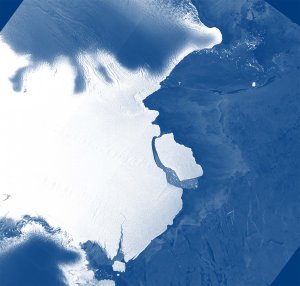A enormous iceberg bigger than Los Angeles or Greater London has separated from the Amery Ice Shelf in Antarctica, the largest to do so in more than half a century.

The table iceberg, named D-28 by scientists, broke off the shelf in east Antarctica on September 26. It measures 1,636 square kilometres (632 square miles) in area, is 210 meters (689 feet) thick and weighs a massive 315 billion tons.
The iceberg will now be tracked because it poses a potential hazard for shipping.
Scientists from the Australian Antarctic Program, Institute for Marine and Antarctic Studies and the Scripps Institution of Oceanography, San Diego have watched developments on the ice shelf for almost 20 years, after first spotting a rift developing in the early 2000s.
Helen Amanda Fricker, a glaciologist at Scripps, said researchers had predicted a calving event between 2010 and 2015 — some 50 years on from the last one, which occurred on the Amery in 1963-4.
In a statement released by the Australian Arctic Division, she said: “I am excited to see this calving event after all these years. We knew it would happen eventually, but just to keep us all on our toes, it is not exactly where we expected it to be.”
She and her colleagues had been keeping an eye since 2002 on a nearby location known as “Loose Tooth” because of its shape and its precarious attachment to the ice shelf.
Scientists believe that the calving process is a natural phenomenon and is not related to climate change.
Fricker explained: “We don’t think this event is linked to climate change, it’s part of the ice shelf’s normal cycle, where we see major calving events every 60–70 years.”
Last week’s calving — observed on satellite imagery — will not have an impact on sea levels, the researchers say.
The Scripps Institution of Oceanography wrote on its Twitter page: “They [ice shelves] do not directly affect sea level because ice shelves are already floating, much like an ice cube in a glass of water. Grounded ice is the concern for sea level rise.”
In comments posted by Scripps, Fricker added that “while there is much to be concerned about in Antarctica, there is no cause for alarm yet for this particular ice shelf.”












